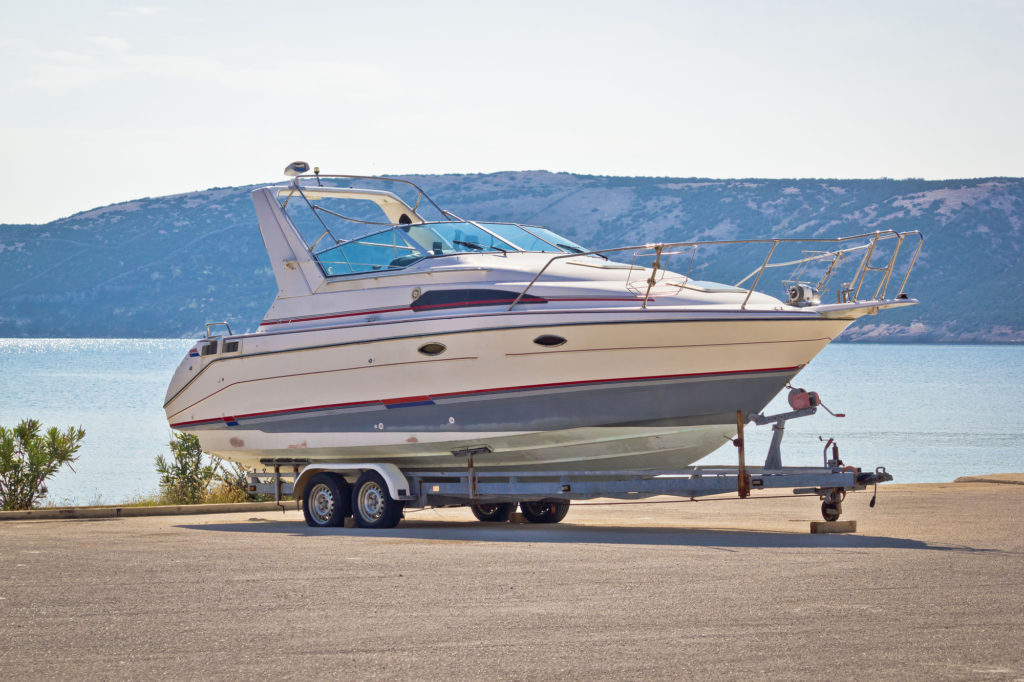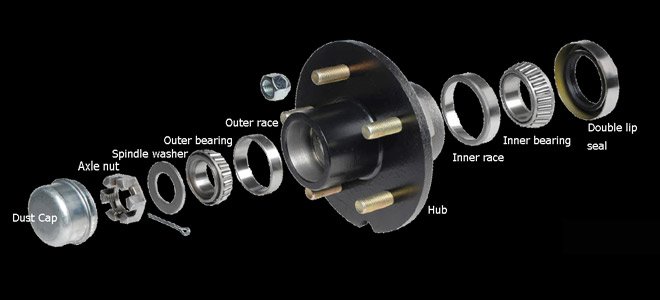
Boat Trailer Bearings – When and How to Replace Them
Your boat means a lot to you. It’s your freedom on the water and a source of joy for you and those who enjoy it. However, your boat is only as good as its trailer. Failure to ensure proper function of your boat trailer could be disastrous to you, your boat, and your wallet.
One key area that often goes overlooked after dewinterizing your boat is your wheel bearings. After all, they are one of, if not the most, important functioning component that let you put your pride and joy on the open waters.
In this guide, you will learn when and how to replace your boat trailer wheel bearings, as well as some safety tips to follow that will keep your trailer rolling down each and every boat ramp like a champ. Keep reading to be a boat trailer wheel bearing pro!
A Day in the Life of Boat Trailer Wheel Bearings
Let us begin by capping off some details about bearings. The wheel bearing is a fascinatingly powerful, yet simple machine. It bears one half, one fourth, one sixth, or one-eighth of the entire weight of both the trailer and boat combined. The bearing is an enclosed unit and is the first point of contact that gives movement to the wheel.
The wheel bearing on a boat trailer is similar to that of a wheel bearing of a car or other trailers. It consists of a pressed in circular smoothed and hardened metal race. Inside this race is the heart of the bearing: a system of metal-free rolling pins that encircle an inner race.
The job of the wheel bearing is to let the hub spin freely with the least amount of friction and heat built up as possible. this is done by through the rolling pins that roll between the inner and outer race. However, this job does not go as easily said than done without one key component: grease.
The Importance of Grease
You see, grease is a complex compound that drastically reduces friction in the bearing by existing between the two metal surfaces. Without grease, the bearings friction from spinning would result in high temperatures that pose a problem, as the heat can cause weakening of the metal and expansion that could be detrimental to the function of the wheel while being towed and under load.
With grease being such an important factor in a wheel bearing, we find a particularly interesting problem associated with boat trailers specifically. As you tow your trailer, the bearing heats up and also heats up the grease, giving the grease a lower viscosity, and even less viscosity in the hot months of the boating season. As you back your boat and boat trailer into the water, the hot and runny grease sees an inrush of water that seeks to push the grease out of its rightful spot in the bearing as well as rapidly cooling the bearing.
To limit the amount of grease that is lost when the trailer is put in the water, boat trailers have rubber caps that seal the bearings from the outside. A new wheel bearing will provide great protection, however, even the best trailers on the market will eventually need to have wheel bearings replaced.
The wheel bearing of a boat trailer is a vital component under constant load, transferring essential energy, and being put through rigorous temperatures and conditions. That is why it is essential to change your boat trailer wheel bearings.
When to Change a Boat Trailer Wheel
Bearing
The time period between boat trailer wheel bearings can vary depending on a few factors. We always recommend at the very lease to check it during your spring boat service because as we reviewed earlier, the boat trailer wheel bearing is put through the ringer every time your boat is put in and taken out of the water.
This makes it difficult to tell when exactly is the right time to change your boat trailer wheel bearing. But with the right knowledge, you can determine when you need to replace them.
Often times, you can search your trailers owners manual for the proper time to change your wheel bearings. If you cannot determine the maintenance times from your boat trailers manual and decide to take on the task your self, (as opposed to getting it serviced) there are a few tools you will need to have in order to complete the job.

Inspecting and Replacing Your Wheel Bearing
To inspect your wheel bearing, be sure you have the following:
- Floor jack and jack stands
- Proper size lug socket and breaker bar
- Rubber or plastic mallet
- Flathead screwdriver
- Rag
- Compressed air and air nozzle
- Proper bearing grease
- Bearing Packer (optional)
Now that you have your tools, let’s get started. Start by lifting up one side of your trailer to gain access to the wheel. Use jack stands under the frame of the trailer to ensure safety.
grab the wheel and shake your wheel in and out. Note any excessive play that happens as you do this, as it may be an indicator that your bearing s work out.
Proceed to take off the trailer’s wheel to access the hub. Using the flat screwdriver, pry off the dust cap. Depending on your trailer you may need to use the mallet to tap out the bearing protector.
Using care, take out your wheel bearing. Take note of any metal shavings and debris that may come with it. Excess debris and metal shavings should be a reason alone to change out the bearing.
Clean the bearing with a grease-cutting solvent and blow dry with air. Now that your bearing is free, inspect it for damage. The pins that roll should be smooth, and all of them should be there. Inside the race, there should be no gouging or scars. If so, you should replace your bearing set.
If one bearing has a problem, it is best to replace both as it is an indicator that the time that has passed is the full life of that part according to the punishment they have gone through.
Packing Your New or Still Good Bearing
If you have determined your wheel bearing to be good than this will be the next step you will take. Otherwise, get your self some new bearings and meet back up where you left off
Packing your bearings is a ritual some know very well. It can be very messy, but its simple. We are going to first talk about packing by hand. With your bearing in one hand, gather a bunch of grease in your other. Now simply press the grease into the bearings and spin it until grease fills and overfills all cavities of the bearing.
Now if you have a bearing packer, this is a little cleaner. Just follow your instructions, fill your packer with grease, put your bearing on and press away.
Reassemble and Get On the Water
With your new or still-good trailer wheel bearings clean and packed, reassemble your bearing sets in your hubs, set your bearings, and torque your lugs to your trailers proper specifications.
Make sure your dust caps or bearing protectors are properly on as well. It is a good habit to check your boat trailer bearings after your first drive and to make this first drive be a short one around the block as a test. Preparing for a long tow is essential for the safety of you, your boat and boat trailer.
With a freshly packed bearing and a couple of put-in’s under your belt, make time to check up on the bearings every so often, as well as the rest of your boat trailer parts. Everything good is made better with maintenance.
Boating can be a precious treasure to those that have pursued it. You know the joy that comes from the freedom of the water. Don’t leave your boat riding on uncertainty. Your boat trailer wheel bearings may seem like a small insignificant part, but they can cause havoc if they do not function properly.
Keep Saftey at the Forefront of Your Mind
Take the time to grease and replace your boat trailers wheel bearings whenever the time comes, and ensure that each and every trip to the lake or sea is filled with family, fun, and good times. A faulty wheel bearing can be a costly tow, and leave you stranded in tough terrain. You never know when a simple oversight may be disastrous.
Failure to check wheel bearings on a pre-owned boat have resulted in the complete locking of a wheel. This at freeway speeds can be deadly. It may be useful in many cases, in fact, to stock up on spare wheel bearings. Keep them in the truck, and address the situation if it arises.
Listen for grinding, clicking, or the usual shakey hub. If you notice these signs, take the steps provided above to figures out whether a wheel bearing change is needed.
Ready to Enjoy the Water?
It doesn’t take long to perform these proactive measures to reduce risk. Keep your boat on land and sea by following our steps on inspecting and replacing your wheel bearings, and get your self safely to the boat launch!
Of course, you can always come in and have a professional opinion about the status of your trailer with expert service and quality parts. Simply give us a call or check out our website for more information!
